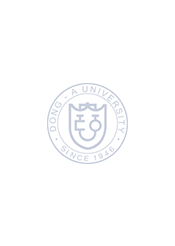| 000 | nam5i | |
| 001 | 2210080934524 | |
| 003 | DE-He213 | |
| 005 | 20250321105409 | |
| 007 | cr nn 008mamaa | |
| 008 | 240711s2024 si | s |||| 0|eng d | |
| 020 | ▼a9789819724321▼9978-981-97-2432-1 | |
| 024 | ▼a10.1007/978-981-97-2432-1▼2doi | |
| 040 | ▼a221008 | |
| 050 | ▼aQA75.5-76.95 | |
| 072 | ▼aUYA▼2bicssc | |
| 072 | ▼aCOM014000▼2bisacsh | |
| 072 | ▼aUYA▼2thema | |
| 082 | ▼a004.0151▼223 | |
| 100 | ▼aLiu, Xinyu.▼eauthor.▼4aut▼4http://id.loc.gov/vocabulary/relators/aut | |
| 245 | 00 | ▼aMathematics in Programming▼h[electronic resource] /▼cby Xinyu Liu. |
| 250 | ▼a1st ed. 2024. | |
| 264 | ▼aSingapore :▼bSpringer Nature Singapore :▼bImprint: Springer,▼c2024. | |
| 300 | ▼aXII, 383 p. 197 illus.▼bonline resource. | |
| 336 | ▼atext▼btxt▼2rdacontent | |
| 337 | ▼acomputer▼bc▼2rdamedia | |
| 338 | ▼aonline resource▼bcr▼2rdacarrier | |
| 347 | ▼atext file▼bPDF▼2rda | |
| 505 | ▼aChapter 1 Numbers -- Chapter 2 Recursion -- Chapter 3 Symmetry -- Chapter 4 Category -- Chapter 5 Fusion -- Chapter 6 Infinity -- Chapter 7 Paradox. | |
| 520 | ▼aThe book presents the mathematical view and tools of computer programming with broad and friendly context. It explains the basic concepts such as recursion, computation model, types, data, and etc. The book serves as an introductory and reference guide to the engineers, students, researchers, and professionals who are interested in functional programming, type system, and computer programming languages. The book covers seven topics. Firstly, it lays out the number system based on Peano Axioms and demonstrates the isomorphic computer data structures. Then, it introduces Lambda calculus as a computing model and recursion, an important programming structure, with the Y-combinator. It next presents the basic abstract algebra, including group and fields, and provides a friendly introduction to Galois theory. After that, it uses category theory as a tool to explain several concepts in computer programming, including the type system, polymorphism, null handler, and recursive data types, then followed by an application of program optimization. In the last two chapters, the author shows how to program with the concept of infinity through stream and lazy evaluation, and then explains the naïve set theory and transfinite numbers, from which the logic paradox arises. Finally, it introduces four historical views of mathematical foundation, as well as Gödel’s incompleteness theorems developed in 1930s, and how they define the boundaries of computer programming. Additionally, the book provides biographies, stories, and anecdotes of 25 mathematicians, along with over 130 exercises and their corresponding answers. | |
| 650 | ▼aComputer science. | |
| 650 | ▼aComputer science▼xMathematics. | |
| 650 | ▼aMathematics. | |
| 650 | ▼aComputer Science Logic and Foundations of Programming. | |
| 650 | ▼aMathematical Applications in Computer Science. | |
| 650 | ▼aMathematics in Popular Science. | |
| 710 | ▼aSpringerLink (Online service) | |
| 773 | ▼tSpringer Nature eBook | |
| 776 | ▼iPrinted edition:▼z9789819724314 | |
| 776 | ▼iPrinted edition:▼z9789819724338 | |
| 856 | ▼uhttps://doi.org/10.1007/978-981-97-2432-1 | |
| 912 | ▼aZDB-2-SCS | |
| 912 | ▼aZDB-2-SXCS | |
| 950 | ▼aComputer Science (SpringerNature-11645) | |
| 950 | ▼aComputer Science (R0) (SpringerNature-43710) |
Mathematics in Programming[electronic resource] /by Xinyu Liu

종류
전자책
서명
Mathematics in Programming[electronic resource] /by Xinyu Liu
저자명
판 사항
1st ed. 2024.
형태사항
XII, 383 p 197 illus online resource.
주기사항
The book presents the mathematical view and tools of computer programming with broad and friendly context. It explains the basic concepts such as recursion, computation model, types, data, and etc. The book serves as an introductory and reference guide to the engineers, students, researchers, and professionals who are interested in functional programming, type system, and computer programming languages. The book covers seven topics. Firstly, it lays out the number system based on Peano Axioms and demonstrates the isomorphic computer data structures. Then, it introduces Lambda calculus as a computing model and recursion, an important programming structure, with the Y-combinator. It next presents the basic abstract algebra, including group and fields, and provides a friendly introduction to Galois theory. After that, it uses category theory as a tool to explain several concepts in computer programming, including the type system, polymorphism, null handler, and recursive data types, then followed by an application of program optimization. In the last two chapters, the author shows how to program with the concept of infinity through stream and lazy evaluation, and then explains the naïve set theory and transfinite numbers, from which the logic paradox arises. Finally, it introduces four historical views of mathematical foundation, as well as Gödel’s incompleteness theorems developed in 1930s, and how they define the boundaries of computer programming. Additionally, the book provides biographies, stories, and anecdotes of 25 mathematicians, along with over 130 exercises and their corresponding answers.
ISBN
관련 URL
소장정보
예도서예약
서서가부재도서 신고
보보존서고신청
캠캠퍼스대출
우우선정리신청
검검색지인쇄
| 등록번호 | 청구기호 | 별치기호 | 소장위치 | 대출상태 | 반납예정일 | 서비스 |
|---|---|---|---|---|---|---|
| 전자자료는 소장사항이 존재하지 않습니다 | ||||||